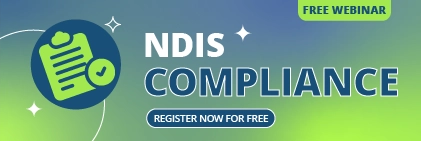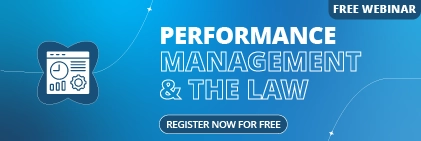Managing employees in your small Australian business involves many time-consuming tasks.
Without proper systems, these HR responsibilities can quickly overwhelm you and take time away from growing your business.
HR software can solve these problems by automating routine tasks and keeping all your employee information in one place.
However, choosing the right system is crucial because Australian businesses have specific requirements that international software often doesn’t address properly.
You need HR software that understands Australian employment laws, handles local payroll requirements, and integrates with the systems you already use.
The wrong choice could create more problems than it solves, whilst the right software will save you hours every week and help you avoid costly compliance mistakes.
This guide explains everything you need to know about selecting HR software for small business in Australia.
What is HR Software?
HR software is a technology solution designed to automate, streamline, and centralise all your human resources processes in one convenient platform.
Instead of having employee files scattered across different folders, leave requests buried in your email inbox, and timesheets on various spreadsheets, HR software brings everything together in one organised system.
But HR software isn’t just about making your life easier – though it certainly does that. It’s also about creating a better experience for your employees.
When your team can easily request leave, view their pay slips, update their personal details, or check their remaining holiday entitlements through a simple online portal, they feel more empowered and engaged with your business.
For Australian small businesses, HR software serves as a crucial bridge between the informal, personal approach that makes small companies special and the professional systems that growing businesses need to implement.
You can maintain that close-knit team culture while ensuring you’re meeting all your legal obligations and setting your business up for sustainable growth.
Why Australian Small Businesses Need HR Software?
Running a small business in Australia comes with a unique set of challenges that makes HR software not just helpful, but practically essential for your long-term success.
If you’ve been managing everything manually, you’ve probably already discovered that Australia’s employment landscape is far more complex than it initially appears.
Let’s start with the regulations. Australia has some of the most comprehensive employment laws in the world, and they’re constantly evolving.
From the Fair Work Act requirements to superannuation obligations, award interpretations to long service leave calculations – keeping up with it all whilst trying to run your actual business can feel impossible.
One mistake with leave entitlements or super payments can result in costly penalties that could seriously impact your cash flow.
Then there’s the growth challenge that many successful small businesses face. When you started with just a few employees, managing everything on spreadsheets or even pen and paper might have worked fine.
But as your team grows – whether that’s to 10, 20, or 50 people – the administrative burden grows exponentially.
What once took you 30 minutes a week suddenly becomes a full day’s work, and you find yourself spending more time on paperwork than actually growing your business.
Australian small businesses also face unique seasonal and casual employment patterns that make workforce management particularly tricky.
Whether you’re dealing with summer casuals, harvest workers, or seasonal retail staff, you need systems that can handle variable hours, different pay rates, and complex leave calculations without breaking a sweat.
Essential Features for Australian-Specific HR Software
When you’re shopping around for HR software, it’s easy to get overwhelmed by flashy features and marketing promises.
However, for Australian small businesses, there are six essential features that should be non-negotiable in your decision-making process.
1 – User-Friendly Interface
You don’t need to be a tech wizard to run effective HR software, and frankly, you shouldn’t have to be.
The best HR systems for small businesses prioritise simplicity and intuitive design because they understand that you’re already wearing multiple hats in your business – you don’t need the added complexity of learning a complicated system.
Look for software that feels familiar from the moment you log in. The navigation should be logical, with clear menu structures that make sense to someone who isn’t a HR professional.
When your employees can easily find what they need – whether that’s requesting leave, viewing their pay slips, or updating their emergency contacts – you’ll spend far less time fielding basic questions and walking people through processes.
2 – Core HR Functions
Your HR software needs to handle the fundamental people management tasks that currently consume your time.
This includes maintaining comprehensive employee records with all the essential information – personal details, employment contracts, emergency contacts, and important documents like tax file number declarations and superannuation choice forms.
The system should also manage your organisational structure clearly, allowing you to set up reporting relationships, define roles and responsibilities, and track important dates like probation periods, contract renewals, and performance review schedules.
These might seem like small details, but they’re the building blocks of professional people management that help your business scale successfully.
3 – Time and Attendance Management
Accurate time tracking is absolutely critical for Australian businesses, particularly given our complex award system and overtime regulations.
Your HR software should make it simple for employees to clock in and out, whether they’re working in the office, from home, or at different job sites.
Look for systems that can handle various work arrangements – from standard nine-to-five office workers to shift workers, casuals, and part-time employees.
The software should automatically calculate overtime, penalty rates, and shift allowances according to relevant awards, saving you from creating complex manual calculations that are prone to expensive errors.
4 – Regulatory Compliance Features
This is where choosing Australian-specific software becomes crucial.
Your system needs to understand and automatically apply Australian employment laws, including the Fair Work Act requirements, relevant awards, and enterprise agreements that apply to your industry and workforce.
Leave management that’s compliant with Australian standards is non-negotiable.
The software should handle annual leave, personal leave, parental leave, and long service leave calculations accurately, including the complex accrual rates and loading requirements that vary between states and industries.
It should also manage public holidays correctly for your location and understand how these interact with various types of leave.
The system should keep you informed about compliance requirements and upcoming deadlines.
Whether it’s reminding you about superannuation payment dates, flagging when someone’s working hours approach maximum limits, or alerting you to upcoming long service leave entitlements, proactive compliance features can save you from costly mistakes.
5 – Local Payroll Requirements
While not all HR systems include full payroll functionality, your chosen software should at least integrate seamlessly with Australian payroll requirements.
This means understanding Australian tax obligations, superannuation calculations, and the various deductions and allowances that might apply to your employees.
The system should generate accurate pay data that complies with Single Touch Payroll (STP) requirements, making it easy to report to the Australian Taxation Office.
It should handle the complexities of different employment types – from full-time salary employees to casual workers with varying hourly rates and penalty loadings.
Superannuation management is another critical component. Your HR software should track each employee’s chosen super fund, calculate the correct contribution amounts, and help you stay on top of the mandatory payment deadlines that can result in hefty penalties if missed.
6 – Integration with Australian Systems
Your HR software shouldn’t exist in isolation – it needs to play nicely with the other systems you’re already using in your business.
This includes popular Australian accounting software like Xero or MYOB, which many small businesses rely on for their financial management.
Banking integration is particularly important for Australian businesses. The system should support the payment methods and formats used by Australian banks, making it simple to process salary payments, superannuation contributions, and other financial obligations through your existing banking relationships.
Integration with Australian government systems and reporting requirements will save you countless hours of manual data entry.
Whether it’s generating reports for Fair Work Australia, preparing STP submissions, or managing workers’ compensation requirements, seamless integration ensures accuracy whilst reducing your administrative burden.
Try Sentrient – The Best HR Software for Australian Small Businesses!
After exploring all the essential features you need in HR software, you’re probably wondering which solution actually delivers on these promises without breaking the bank or overwhelming your team.
This is where Sentrient stands out as the clear choice for Australian small businesses who want professional HR management without the complexity or cost of enterprise-level systems.
Sentrient has been specifically designed with Australian small businesses in mind, which means you won’t find yourself struggling with features built for different countries or employment laws that don’t apply to your situation.
Ready to see how Sentrient can transform your HR management?
Book a demo and discover why thousands of Australian small businesses have made the switch to smarter, simpler HR management.
FAQs
1. How much does HR software cost for a small business in Australia?
HR software costs for small businesses in Australia vary based on team size, features, and support levels. Pricing depends on whether you need essentials like onboarding or advanced tools like payroll integration. Many providers offer flexible plans, free trials, or basic versions for small teams.
2. How long does it take to implement HR software in a small business?
Most small businesses can get HR software running within 1-2 weeks. Modern cloud-based systems require no installation – you simply upload your employee data, configure leave policies, and start using features like time tracking and leave requests immediately. Most providers include free setup support.
3. Is HR software worth it for businesses with fewer than 10 employees?
Yes, especially since you’re likely handling all HR tasks yourself. Even with 3-4 employees, managing leave, timesheets, and compliance manually is time-consuming. HR software also creates a professional image that helps attract quality staff who expect modern systems.
4. What happens to my data if I want to switch HR software providers?
Most reputable providers offer data export options, allowing you to download employee information and records in standard formats like CSV or PDF. Many will even assist with data migration to new systems as part of their customer service.
5. Do I need separate payroll software if I have HR software?
It depends on your chosen system. Some HR software includes full payroll functionality, while others integrate with dedicated payroll solutions like Xero or MYOB. For most small businesses, an integrated HR and payroll solution eliminates double data entry and ensures compliance with Australian requirements.
Read More About HR Management:
- What Is The Best HR Software In Australia For Small Businesses?
- Top HR Software for Australian Payroll & Leave Regulations in 2025
- How to Choose the Right Compliance Management Software: Key Features to Consider
- How to Choose the Best HR Software for Your Industry: Retail, Construction, and Hospitality
- The Top 10 Human Resource Management Information Systems (HRIS) In Australia





